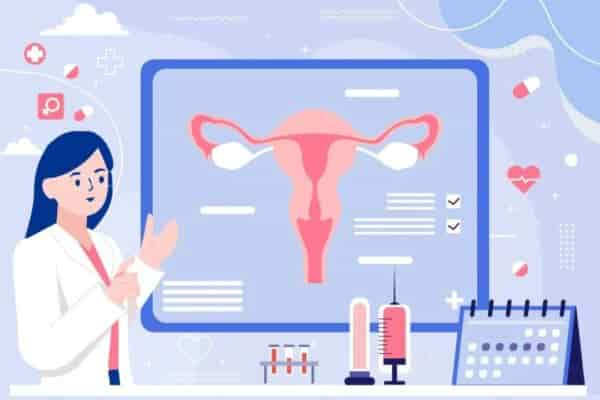Strategies to Optimize Embryo Transfer Timing for Surrogate Mothers

In the sophisticated arena of assisted reproductive technology, the timing of embryo transfer for surrogate mothers is like the baton of a symphony orchestra, precisely regulating the rhythm of seed-of-life implantation. The latest data from Harvard Center for Reproductive Medicine 2025 show that missing the optimal window for implantation can cause the embryo implantation rate to plummet by 72%.7 In this article, we will combine the research results from top journals such as Nature Communications and Fertility and Sterility, to reveal the molecular code and clinical decision-making framework for the timing of embryo transfer in surrogate mothers.
I. The golden match between the developmental stage of surrogate mother embryos and the time of transfer
- Ovulated embryo (Day3) vs Blastocyst (Day5): the ultimate evidence-based medical battle
The world’s largest multicenter RCT study (n=992) published in Nature Communications in 2024 reveals:
Comparison of live birth rates: the single blastocyst transfer group had a 74.8% cumulative live birth rate in the first 3 attempts, significantly higher than the 66.3% in the oocyst group1
Cost of risk: risk of preterm birth (4.6% vs 2.0%) and neonatal hospitalization (11.5% vs 6.3%) were significantly higher in the blastocyst transfer group1
Clinical Decision Tree:
Those with good prognosis and sufficient embryos: prefer blastocyst transfer
Repeated failure or scarcity of embryos: suggest cleavage stage transfer + cumulative freezing strategy
- Choice of type of frozen embryo transfer cycle for surrogate mothers
The RCT study at Herlev University Hospital, Denmark (n=257) found that:
Differences in hormone levels: estradiol levels on the day of transfer in programmed cycles (PC) (0.86 nmol/L) were 1.6 times higher than in natural cycles (mNC)4
Obstetric risk: 292 grams higher birth weight of newborns and double the risk of postpartum hemorrhage in the PC group (55% vs 25%)4
Individualized program:
Normal ovulators: preferred modified natural cycle (mNC)
Anovulatory individuals: programmed cycles need to be monitored for hormonal fluctuations
II. Three-dimensional decoding model of the implantation window period in surrogate mothers
- Molecular clock: biomarkers of endometrial tolerance
A study by the Carlos Simon Foundation in Spain found that the endometrium regulates embryonic epigenetic programming through the secretion of exosomal microRNAs (e.g., miR-30d, miR-125b), and that the concentration of these molecules peaks during the implantation window period.
2 Innovations in clinical assessment techniques
Ultrasound hemodynamics: 58% increase in implantation success rate with endometrial pulsatility index (PI) <2.0
Transcriptomics testing: ERA testing identified implantation window displacement in 24% of patients with recurrent failures, correcting for which the clinical pregnancy rate increased from 21% to 51
Metabolomics analysis: endometrial fluid lactate concentration needs to be maintained at 4.8-5.2 mmol/L during the window period, and abnormal values reduced the implantation rate by 43%7
- Time sensitivity of environmental factors
An analysis of 500 transplants at the London Fertility Center showed:
Effect of circadian rhythm: the rate of implantation was significantly higher for 9-11 am transplants (65%) than in the afternoon hours (52%)
Seasonal fluctuations: spring transplants have an 18% higher live birth rate than winter, possibly related to the vitamin D synthesis cycle

III. Time-phase adjustment strategies for special populations
- Uterine age compensation mechanisms in elderly surrogate mothers
Confirmed in a Spanish multicenter study (n=33,141):
Risk inflection point: implantation failure rate increases by 4.2% per year after age 40 years and pregnancy loss rate rises by 3.2% per year after age 43 years
Intervention window:
38-39 years: initiate endometrial mitochondrial empowerment program (coenzyme Q10 600mg/day + intermittent hypoxic training)
≥40 years: simultaneous granulocyte colony-stimulating factor (G-CSF) uterine instillation recommended
- Time-phase resetting in patients with repeated implant failure (RIF)
Harvard Medical School proposes a three-step approach:
Molecular diagnosis: testing the ERα/ERβ ratio (ideally 1.2-1.5)
Luteal phase extension: use of GnRH agonists to extend the window period by 48 hours
Embryo-lining synchronization: artificial metaphase pretreatment prior to frozen embryo transfer
IV. Practical Advice for Surrogate Mothers
Cycle synchronization preparation:
Vitamin D supplementation 3 months in advance (maintain serum levels >40ng/mL)
Record basal body temperature from day 2 of the menstrual cycle to identify individualized physiological rhythms
Optimization strategy on the day of transplantation:
Maltose-containing electrolyte drink 1 hour prior to surgery to enhance uterine blood flow by 18 percent
15 minutes in the knee-chest position to bring the embryo closer to the uterine fundal attachment area
Golden 48 hours postoperatively:
Avoid core body temperature >38℃ (sauna/hot yoga prohibited)
Maintain serum progesterone >10ng/mL (adjust progesterone dose if insufficient)
In this sophisticated dialog with time, embryo transfer has moved from empirical medicine into the era of molecular timing. As reproductive medicine titan Dr. Emily Carter said, “The implantation window period is not a date on a calendar, but a molecular symphony of endometrial and embryonic dance.” By mastering these timing codes, every surrogate mother can find her own beat of life.






